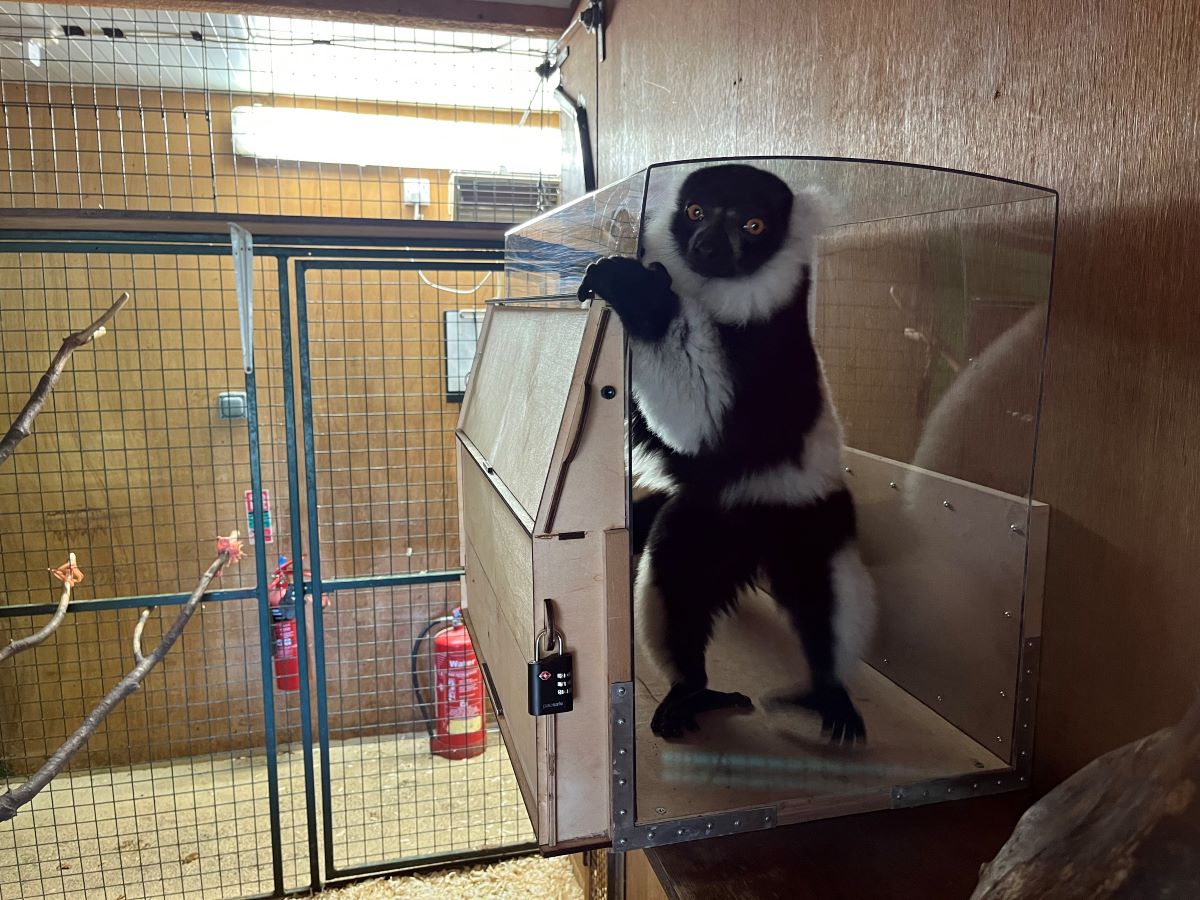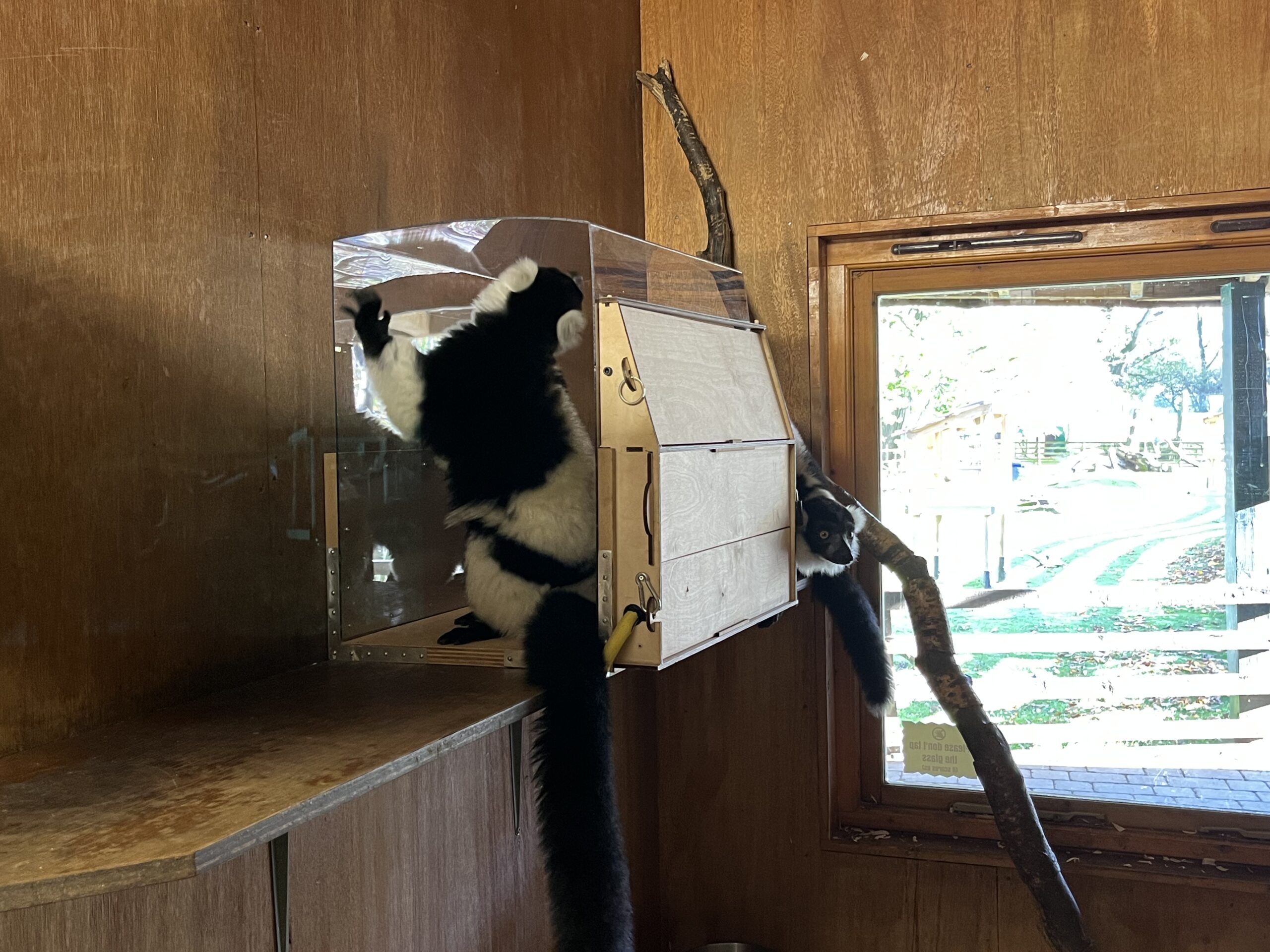
Lemur Lounge: Lemurs prefer listening to music over sitting in silence
They have a penetrating stare, bushy tails and a penchant for singing. But it turns out lemurs also like listening to music.
Though they are much less closely related to humans than monkeys and apes, we still have a lot in common with lemurs. Some worship the sun, while others have a sense of rhythm, and a rare species even has blue eyes.
And now scientists have discovered, just like humans, lemurs have their own personal favourite tunes, with some going for banging beats and others choosing the more relaxing tones of the rainforest.
A troop of bright-eyed and bushy tailed lemurs at Blair Drummond Safari Park, near Stirling, were given their very own ‘Lemur Lounge’ – a wooden box lined with infrared sensors that played one of a rotating selection of sounds when the animals entered.
Speakers inside the box played the sounds of a rainforest, city noise, upbeat music, calm music or white noise for as long as the lemurs chose to remain in the lounge.
Over the course of eight weeks, the lemurs could visit the LemurLounge whenever they wanted.
Scientists found the animals prefer sound over silence when given the choice. But their interactions vary across species and between individuals, which could suggest that, like humans, lemurs have their own preferences.
Common brown lemurs triggered sounds for around two seconds at a time, while their black-and-white and ring-tailed counterparts stayed longer, for about four seconds.
Older lemurs also spent more time with triggered sounds than their younger counterparts, and played them more often.

The lemurs could visit the LemurLounge whenever they wanted.
The findings are the latest from an ongoing research partnership between zookeepers at Blair Drummond Safari Park and researchers from the University of Glasgow.
‘It’s very interesting to hear this study has shown that individual preference may be just as significant to the design process as species variation,’ said Alasdair Gillies, the park’s research coordinator.
‘For us keepers, these findings come as no surprise. Our interactions with these animals grant us the privilege of witnessing their many varied idiosyncrasies on a daily basis. It will be fascinating to see how we can utilise these learnings going forward.’
Dr Ilyena Hirskyj-Douglas, from the University of Glasgow, led the study and hopes the findings could help in developing digital enrichment systems for lemurs living in zoos.
‘Technology offers us the opportunity to enrich the lives of zoo animals with interactive systems that are custom-designed for their physical and mental needs, interests and abilities,’ she said.

Speakers inside the box played the sounds of a rainforest, city noise, upbeat music, calm music or white noise.
‘However, in order to make the most of the potential of interactive devices, it’s vital that we take their preferences into account. As much as we can, we want to design systems in collaboration with them rather than trying to decide what they might want for ourselves.
‘Our partnership with Blair Drummond Safari Park is gives us the chance to start mapping out what a future of animal-computer interaction might look like. It builds on a wealth of previous research showing that audio enrichment could benefit zoo animals’ wellbeing.
‘This research is the first time that zoo-housed lemurs have been given the opportunity to interact with a computer enrichment device.
‘Their reactions to the LemurLounge gives us fresh insight into their behaviour and preferences, and could help inform the development of systems for lemurs and other species in the future.’
Read more Wildlife stories here.
Subscribe to read the latest issue of Scottish Field.
TAGS

